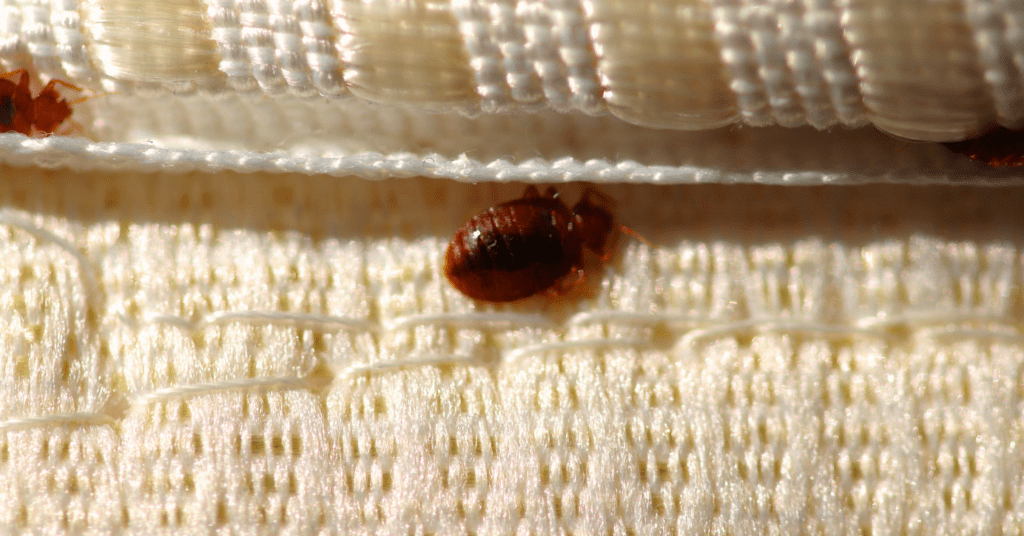The Life Cycle of a Bed Bug: What You Need to Know


Bed bugs are infamous household pests that can infest your living space and disrupt your comfort. They are small, elusive, and reproduce rapidly, making it challenging to eradicate them once they’ve established in your home. Understanding the life cycle of a bed bug can be crucial in dealing with these nuisances effectively.
The Life Cycle of Bed Bugs: A Closer Look
The life cycle of bed bugs is both fascinating and crucial to understand for effective control. Contrary to common belief, bed bugs are not seasonal pests. They can survive and breed all year round, given the right conditions. Bed bugs go through several stages, starting as eggs. Female bed bugs lay tiny, pearl-white eggs, often in cracks or on rough surfaces. These eggs hatch in about a week or two, giving rise to nymphs, which are immature bed bugs. Nymphs undergo five molting stages, shedding their skin at each stage as they grow. They require a blood meal to progress to the next stage, a process that typically takes about five weeks under optimal conditions.
As they progress through these stages, nymphs gradually darken in colour and resemble adult bed bugs. Adult bed bugs are small, about the size of an apple seed, with a flat, oval-shaped body when unfed. They are reddish-brown and become rounder and darker after feeding. Adults can live for about four to six months, sometimes longer in cooler temperatures, and females can lay hundreds of eggs over their lifetime. Understanding this lifecycle is key to disrupting it at various stages, particularly by targeting the vulnerable nymph stages with treatments to effectively control and eliminate infestations.
Understanding What Attracts Bed Bugs

Bed bugs thrive in environments where they can have easy access to their human hosts. The Bed Bug Attraction to warmth and carbon dioxide is a key factor in their successful spread, making our homes ideal environments for these pests. Contrary to common belief, bed bugs are not drawn to dirt or decay; instead, they are attracted to warmth, carbon dioxide, and blood, which are indicative of a living host. Human dwellings provide the perfect habitat for these pests due to the warmth and the ready availability of humans as food sources. Bed bugs are particularly attracted to sleeping humans because of the carbon dioxide we exhale, our body heat, and the fact that we remain still for long periods, making for an easy meal.
They are also attracted to dark crevices and clutter, which offer them convenient hiding spots close to their feeding areas. This preference explains why bed bugs are often found in mattresses, bed frames, and furniture. Additionally, bed bugs can be inadvertently brought into homes through infested luggage, clothing, second-hand furniture, and bedding. Their attraction to human environments and their ability to hitchhike on personal belongings highlight the importance of vigilance, especially when traveling or bringing second-hand items into the home. It’s also important to be aware of their presence in unexpected places like airplanes. Bed Bugs on Planes can be a hidden nuisance, especially for frequent travelers. Understanding these attractions is key in implementing strategies to prevent bed bug infestations and in identifying potential infestation sources early on.
Controlling Bed Bugs Throughout Their Life Cycle


Eradicating bed bugs involves a comprehensive approach to control the infestation at every stage of their life cycle. This involves a combination of mechanical, chemical, and preventive strategies. Mechanical methods include thorough vacuuming of infested areas, particularly around beds, furniture, and other hiding spots, to remove bed bugs and their eggs. Encasements for mattresses and box springs can trap bed bugs and prevent them from escaping or biting. Chemical treatments, performed by professionals like Pestcheck, include the use of insecticides specifically formulated to kill bed bugs at different stages of their life cycle. It’s crucial to use products that are effective against eggs, nymphs, and adults to break the cycle of infestation. Alongside bed bugs, other pests like silverfish can also be a concern. Learn how to tackle a Silverfish Infestation in Your Home with our targeted advice.
Heat treatment is another effective method, as bed bugs of all stages die at temperatures above 120°F (49°C). This can be achieved through professional heat treatment or by washing and drying infested clothing and bedding at high temperatures. Preventive measures are equally important, such as sealing cracks and crevices to eliminate hiding places, maintaining cleanliness to detect early signs of infestation, and being cautious when traveling or bringing second-hand furniture into the home. Integrated Pest Management (IPM) techniques that combine these methods offer the best chance of controlling bed bugs effectively throughout their life cycle and preventing future infestations. Similar to bed bugs, other household pests like ants require targeted strategies for control. Learn more about How to Stop Ants in Your Kitchen for a comprehensive pest-free home.
Conclusion


Understanding the life cycle of bed bugs and their behavior can help homeowners better manage these pesky creatures. Although they can be challenging to eradicate, following preventative measures and early detection can make the task much more manageable. Stay vigilant, keep your home clean, and don’t hesitate to seek professional help with Pestcheck when necessary. After all, a bug-free home is a happy home. For more in-depth guidance on preventing these pests from disrupting your sleep, explore our article on Sleep Tight, Don’t Let the Bed Bugs Bite!
If you’re facing challenges with bed bugs or any other pests in your home, expert help is just a click away. For tailored pest control solutions in your area, explore our specialized services: West Vancouver Pest Control for residents in West Vancouver, North Vancouver Pest Control offering dedicated services in North Vancouver, and Vancouver Pest Control for comprehensive assistance in Vancouver. We also provide targeted pest management in Burnaby & New West Pest Control, Coquitlam & Tri-Cities Pest Control, and Richmond Pest Control. No matter where you are located, our team is ready to help you reclaim your home from unwanted guests. Contact us today for a pest-free environment.
